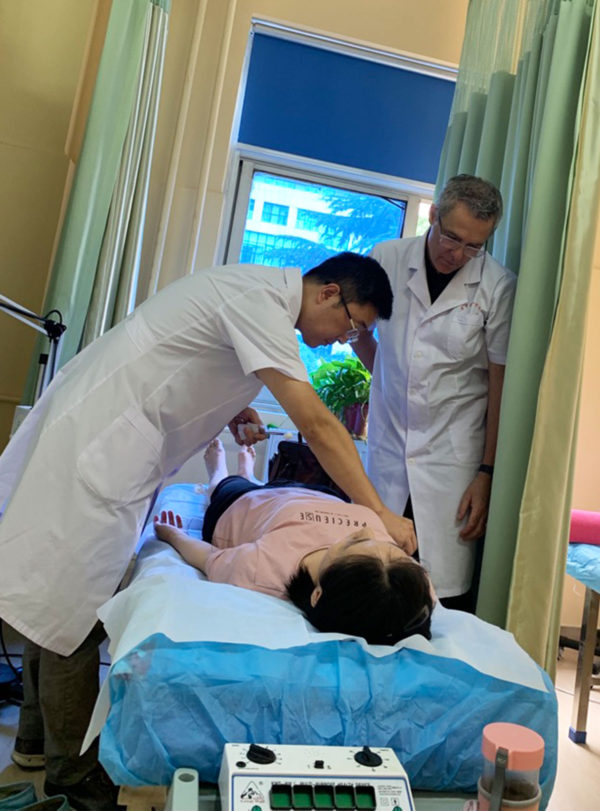Research One
OBJECTIVE:
Reproductive Conditions
To evaluate the effect of acupuncture on the pregnancy rate in assisted reproduction therapy (ART) by comparing a group of patients receiving acupuncture treatment shortly before and after embryo transfer with a control group receiving no acupuncture.
METHODS:
A prospective randomized study.
RESULTS:
Clinical pregnancies were documented in 34 of 80 patients (42.5%) in the acupuncture group, whereas the pregnancy rate was only 26.3% (21 out of 80 patients) in the control group.
CONCLUSION:
Acupuncture seems to be a useful tool for improving pregnancy rate after ART.

Acupuncture and Reproductive Conditions
Resources
Research Two
OBJECTIVE:
To determine the effect of luteal-phase acupuncture on the outcome of IVF/intracytoplasmic sperm
injection (ICSI).
METHODS:
Randomized, prospective, controlled clinical study
RESULTS:
In group I, the clinical pregnancy rate and ongoing pregnancy rate (33.6% and 28.4%, respectively) were
significantly higher than in group II (15.6% and 13.8%).
CONCLUSION:
Luteal-phase acupuncture has a positive effect on the outcome of IVF/ICSI.
Reproductive Conditions
Research Three
OBJECTIVE:
To evaluate the ultramorphologic sperm features of idiopathic infertile men after acupuncture therapy.
METHODS:
A prospective controlled study.
RESULTS:
Statistical evaluation of the TEM data showed a statistically significant increase after acupuncture in the percentage and number of sperm without ultrastructural defects in the total ejaculates. A statistically significant improvement was detected in acrosome position and shape, nuclear shape, axonemal pattern and shape, and accessory fibers of sperm organelles. However, specific sperm pathologies in the form of apoptosis, immaturity, and necrosis showed no statistically significant changes between the control and treatment groups before and after treatment.
CONCLUSION:
The treatment of idiopathic male infertility could benefit from employing acupuncture. A general improvement of sperm quality, specifically in the ultrastructural integrity of spermatozoa, was seen after acupuncture, although we did not identify specific sperm pathologies that could be particularly sensitive to this therapy.
Resources